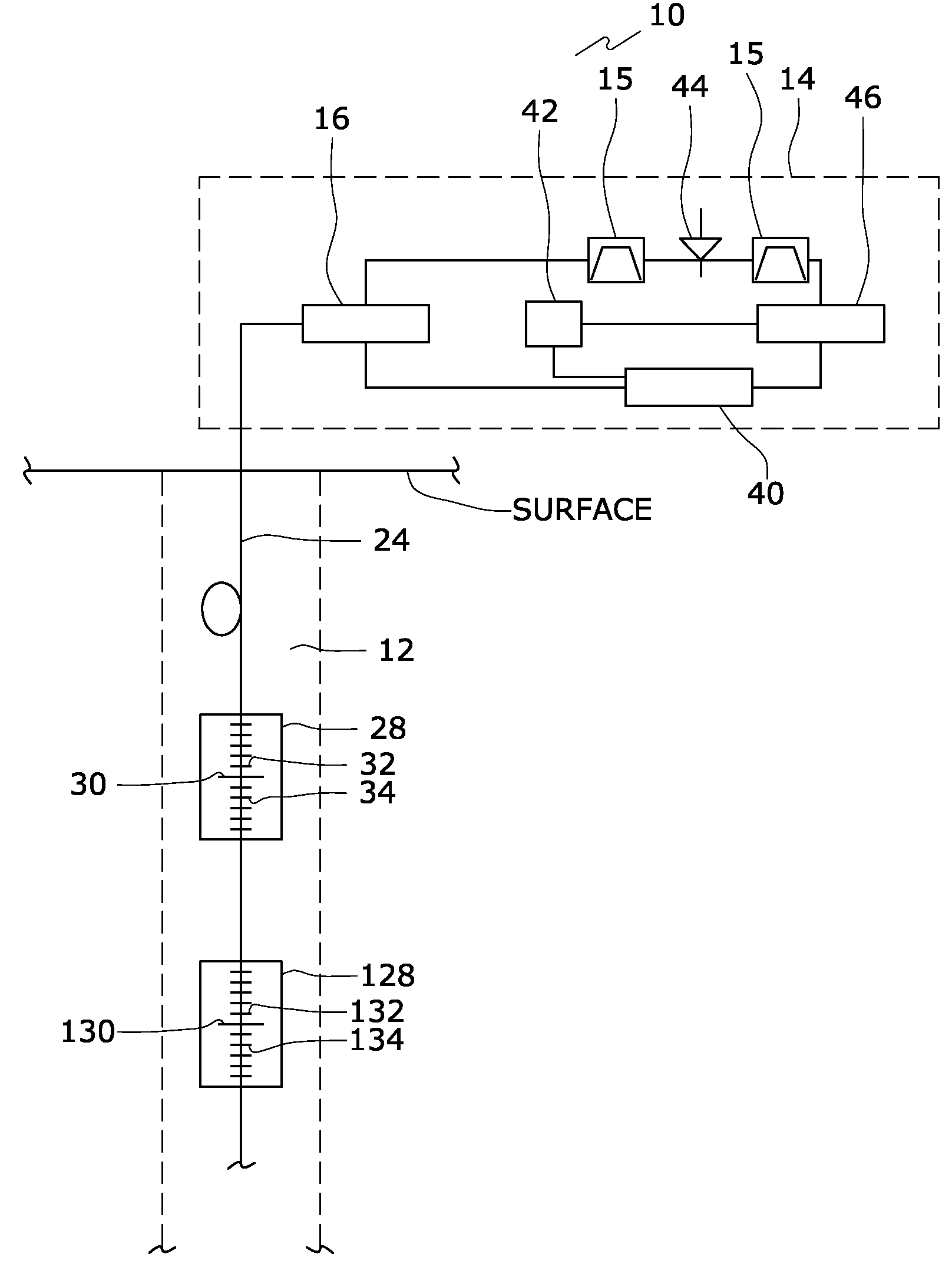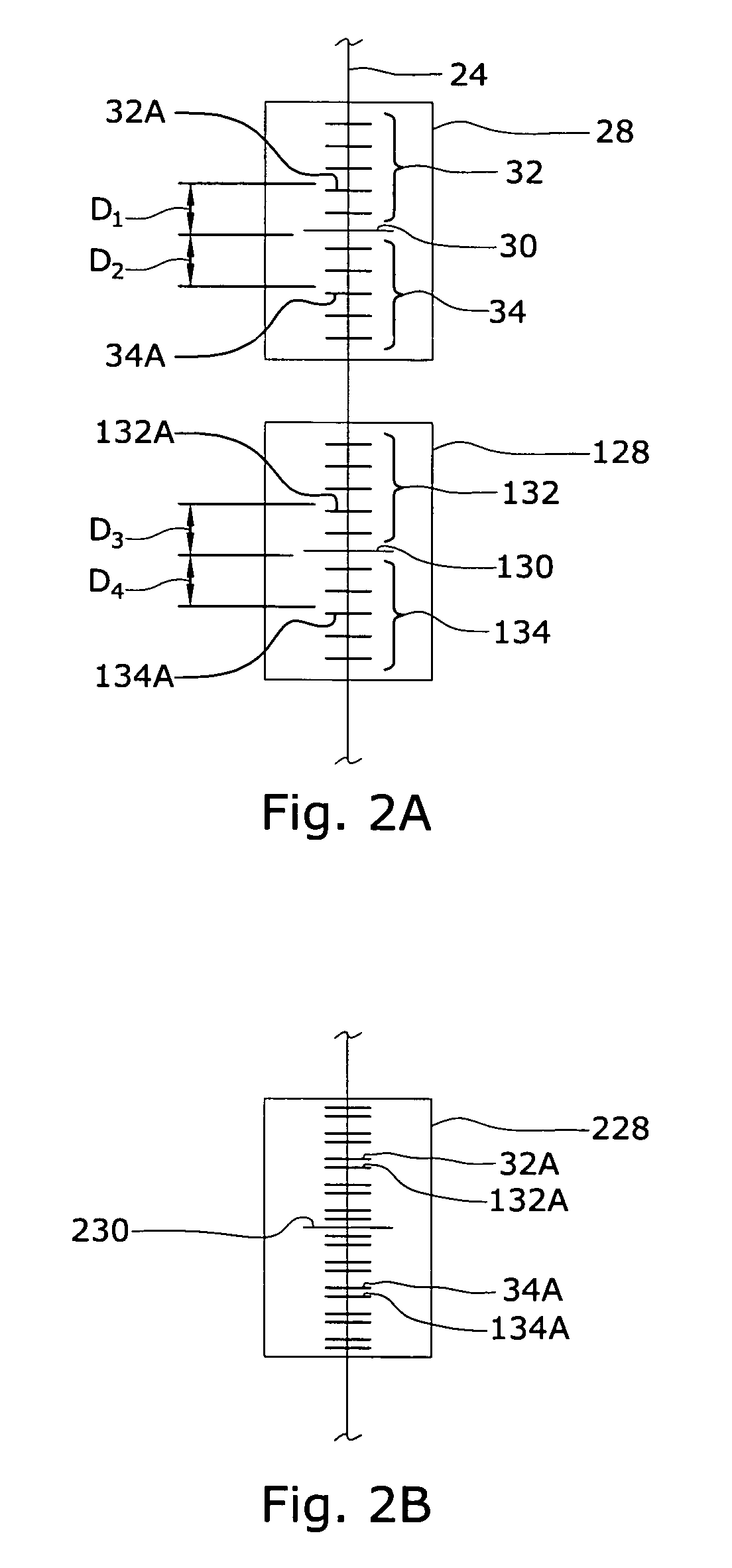System and method for monitoring a well
a well and system technology, applied in the field of fiber optic sensing technologies, can solve the problems of reducing affecting the accuracy of electronic sensors, and difficulty in powering electronic sensors electrically
- Summary
- Abstract
- Description
- Claims
- Application Information
AI Technical Summary
Benefits of technology
Problems solved by technology
Method used
Image
Examples
Embodiment Construction
[0025]The operational properties of an OFDR are governed by the wavenumber spacing, v, the wavelength sweep range, R, the data acquisition frequency, f, and the sensing fiber length, LS. Each of these parameters is described by the following equations:
[0026]v=12nLEq.1
where n is the refractive index of the fiber, and L is the length of a reference interferometer;
[0027]R=λO(1-λONν)(1+λONν)Eq.2
where λ0 is the initial wavelength of the wavelength sweep, and N is the number of data points acquired during a measurement;
[0028]f=Nv.REq.3
where {dot over (v)} is the laser wavelength sweep rate; and
[0029]LS=L4.Eq.4
N can be further described by the following equation:
N=2p Eq. 5
where p is a power of two for facilitating the use of fast Fourier transforms in the processing of the signal data.
[0030]The sensing length LS is a simple function of L, but L also effects v, R, and f. Achieving a long sensing length LS by making L arbitrarily large reduces the wavelength sweep range R and ...
PUM
 Login to View More
Login to View More Abstract
Description
Claims
Application Information
 Login to View More
Login to View More - R&D
- Intellectual Property
- Life Sciences
- Materials
- Tech Scout
- Unparalleled Data Quality
- Higher Quality Content
- 60% Fewer Hallucinations
Browse by: Latest US Patents, China's latest patents, Technical Efficacy Thesaurus, Application Domain, Technology Topic, Popular Technical Reports.
© 2025 PatSnap. All rights reserved.Legal|Privacy policy|Modern Slavery Act Transparency Statement|Sitemap|About US| Contact US: help@patsnap.com



